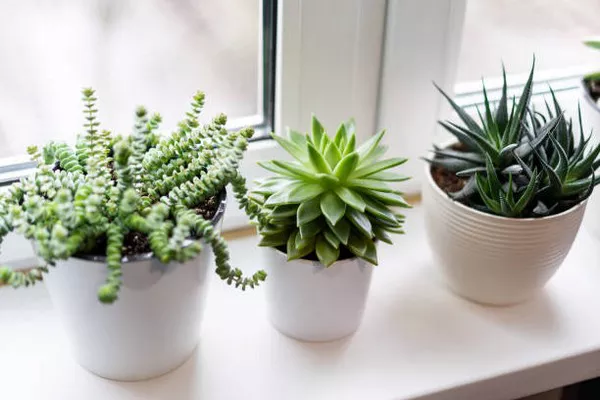Succulents have captivated gardening enthusiasts worldwide with their unique appearance and remarkable ability to thrive in arid conditions. When placed in a terrarium, these charming plants can create miniature landscapes that are not only visually appealing but also easy to care for. However, the key to successfully cultivating succulents within a terrarium lies in understanding their distinct water requirements and providing them with the optimal conditions for growth. In this comprehensive guide, we will delve into the intricacies of how to water succulents in a terrarium to ensure your succulent oasis flourishes.
1. The Ideal Terrarium Environment
Creating the perfect habitat for succulents starts with selecting an appropriate terrarium and setting up an environment that mimics their natural habitat. Follow these steps to create an ideal terrarium environment:
Choosing the Right Terrarium
Select a terrarium with proper drainage, as excess water can lead to root rot. Glass containers with ventilation are excellent choices, allowing air circulation while maintaining a controlled environment.
Selecting the Ideal Soil
Opt for well-draining soil that imitates the gritty, sandy conditions of succulents’ native habitats. A mix of potting soil, sand, and perlite can provide the necessary drainage while retaining some moisture.
Arranging the Layout
Place larger succulents at the back or center, and smaller ones towards the front for optimal visibility. Incorporate various textures, colors, and heights to create an aesthetically pleasing arrangement.
2. Understanding Succulent Watering Needs
Succulents have evolved to store water in their leaves, stems, or roots, allowing them to endure periods of drought. Understanding their water requirements is crucial for preventing overwatering, which is one of the leading causes of succulent demise.
Recognizing Signs of Thirst and Overwatering
Keep an eye out for signs of thirst, such as slightly wrinkled leaves and dry soil an inch below the surface. Conversely, overwatering can lead to yellowing leaves, mushy stems, and the appearance of mold or mildew.
The “Soak and Dry” Method
Employ the “soak and dry” technique: thoroughly water the soil until it’s moist but not soggy, and allow it to dry completely before rewatering. This mimics the natural rainfall patterns in succulents’ native habitats.
Water Quality and Temperature
Use room-temperature water to prevent shocking the plants. If possible, allow tap water to sit for 24 hours to dissipate any chlorine or chemicals. Avoid cold water, as it can stress the plants.
3. Terrarium Watering Techniques
Terrariums pose unique challenges due to their enclosed environment. Watering techniques should be adjusted to account for reduced air circulation and potential moisture buildup.
Limited Watering Frequency
Terrarium succulents require less frequent watering compared to those in open pots. Aim for every 2-4 weeks, but always assess the soil moisture before watering.
Targeted Watering
Direct water to the base of the plants, avoiding foliage to prevent rot. Use a narrow spout watering can or a spray bottle for precise watering.
Preventing Excess Humidity
Terrariums inherently trap moisture. Monitor humidity levels with a hygrometer and consider partially opening the lid periodically to allow excess moisture to escape.
4. Additional Considerations for Terrarium Succulent Care
Beyond watering, several factors contribute to the health and vibrancy of your terrarium succulents.
Light Requirements
Succulents thrive in bright, indirect light. Place your terrarium near a window with filtered sunlight. Rotate the terrarium occasionally to ensure even light distribution.
Choosing the Right Plants
Select succulent species that are well-suited for terrarium conditions. Compact varieties with slower growth are ideal to prevent overcrowding and ensure longevity.
Pruning and Maintenance
Regularly remove dead or decaying leaves to prevent the spread of disease and create space for new growth. Prune leggy growth to encourage a more compact form.
Repotting
As succulents grow, they might outgrow the terrarium. Repot into a slightly larger container when necessary, using the opportunity to refresh the soil mix.
5. Troubleshooting Common Issues
Even with the best intentions, challenges may arise. Here’s how to tackle common problems:
Pest Infestations
Inspect your terrarium regularly for signs of pests such as mealybugs or aphids. Isolate affected plants and treat them promptly to prevent infestations from spreading.
Disease Management
If you notice signs of mold, mildew, or fungal growth, improve ventilation, reduce watering frequency, and ensure proper spacing between plants.
Adjusting Watering
Should you observe signs of overwatering or underwatering, adjust your watering routine accordingly. Gradually increase or decrease the frequency while monitoring plant response.
Conclusion
Cultivating succulents in a terrarium is a rewarding endeavor that offers a glimpse into the beauty of these resilient plants. By understanding their unique water requirements and addressing related considerations, you can create a captivating succulent haven that flourishes within the confines of glass walls. With proper care, attention to detail, and a touch of creativity, your terrarium will thrive as a testament to the artistry of nature and your nurturing hand.


